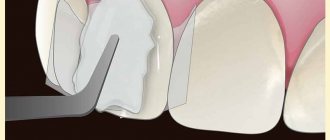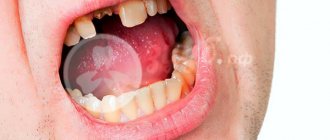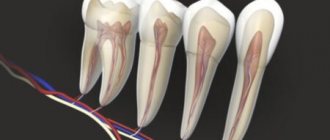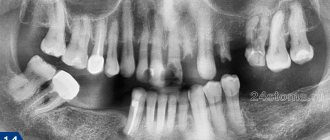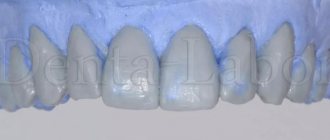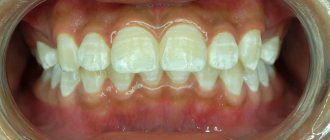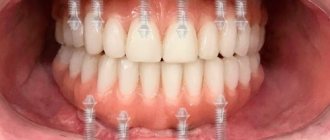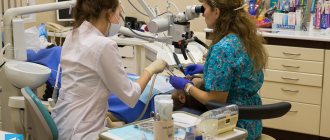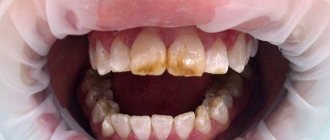The procedure for removing the upper teeth can be carried out planned or emergency. In the first case, the indications are: significant or complete destruction of the supragingival part of the tooth and the inability to use it for prosthetics, chronic periodontitis that cannot be treated conservatively, periodontal diseases with tooth mobility of the third degree, and others.
Urgent removal of the upper tooth is required for purulent periodontitis, periostitis, acute osteomyelitis, lymphadenitis (if the tooth is the source of the disease), sinusitis, deep fracture of the crown exposing the pulp, as well as some other conditions and diseases.
Before the operation to remove the upper tooth, an examination is carried out and, if necessary, an x-ray is taken. As a rule, the operation is done under local anesthesia. Before surgery, the dentist thoroughly cleans the teeth and mucous membranes to prevent infection of the socket.
Depending on the type of tooth, the doctor uses various devices:
- removal of the front teeth (incisors and canines) is carried out using straight forceps;
- for extraction of premolars you need bayonet-shaped and S-shaped forceps, a straight elevator;
- large molars are removed using coronal S-shaped forceps equipped with spikes.
In some cases, it is necessary to saw the tooth into pieces or cut out part of the bone tissue. This mainly applies not to the removal of front teeth, but to the extraction of molars (especially wisdom teeth).
Lower and upper teeth
Teeth consist of 3 parts: crown, neck and root. Their tissues are enamel, dentin, pulp. The teeth of the upper and lower jaws are mirrored. This limits the similarity between the organs of the upper and lower jaw.
The characteristic features of the lower teeth are as follows:
- The lower jaw bone around the teeth being removed is denser
- Diseases develop more often. The reason is the settling of more food debris.
- The frontal incisors are smaller and weaker than the upper ones.
The small and large molars (premolars and molars) have smaller roots than the upper ones. All of the above explains why the removal of lower teeth occurs more often and more difficult than the upper ones.
Result of prosthetics
To restore the aesthetics of the front teeth, 3 visits to the clinic were required (1- consultation with a dentist and periodontist, 2- cleaning and preparation of teeth, 3- securing a bridge). Within 7 days all work was completed. For the bridge prosthesis, the Sculpture FiberKor ceromer was used. The cost of the entire range of dental services was 40,950 rubles. The result is a great-looking smile.
Dental treatment at Dial-Dent means precise planning of the number and duration of visits, as well as drawing up an estimate for treatment, indicating the cost of each stage of work, and appointments at the appointed time. This approach makes treatment convenient for patients with busy work schedules, as it allows them to clearly plan their time and finances. A special feature of Family Dentistry is the solution of complex cases using the most advanced technologies in dentistry, the availability of the necessary diagnostic equipment and various specialists in one clinic.
See other examples of treatment, implantation and dental prosthetics at Dial-Dent here.
Make an appointment for a consultation by phone +7-499-110-18-04 or through the form on the website. You can ask questions about dental treatment and prosthetics to the chief doctor of the clinic, Sergei Vladimirovich Tsukor, at
Contraindications for removal
Extraction of teeth is undesirable, so dentists recommend saving every tooth. If removal is inevitable, then you need to know that this procedure is not carried out in the following cases:
- viral infections and fever;
- exacerbation of cardiovascular diseases;
- stomatitis;
- pregnancy in the last month.
Critical days in women are a relative contraindication. If the removal of the lower teeth is supposed to be done under anesthesia, the following is added to the above: pathologies of the endocrine system, epilepsy, heart failure, old age, pregnancy.
The essence of the technique
Lasers are actively used in medicine and enable doctors to perform complex surgical interventions while minimizing complications. Laser machines are used to remove tartar, plaque, and treat oral diseases.
Using a laser beam, thin incisions are made without bleeding, large-scale damage or infection of the wound. Laser exposure has an antibacterial effect.
The laser technique for removing a unit is used for severe pathologies, when the tooth is hidden under the mucous membrane and needs to be crushed into pieces.
What teeth are removed in the lower jaw?
Depending on the type of teeth, extraction occurs with varying degrees of complexity. Single-rooted front incisors are easier to remove (2 pieces on each side). The canines (on either side of the incisors) have a chisel-shaped root hidden deep in the gum. Sometimes it becomes bent or bifurcated. Together with the incisors, the canines are involved in biting.
The lateral teeth that perform the chewing function include 2 small molars with one root, and 2 large ones with two even roots.
In the eighth position are wisdom teeth. Extraction is complicated by irregular growth and long, twisted roots, the number of which sometimes reaches up to five. These organs do not bear any functional load. Extraction of figure eights is difficult, and sometimes anesthesia is used.
Tooth extraction is practiced if they have an unaesthetic appearance, are a source of infection in the periodontium and cannot be treated, or the crown of the organ is completely destroyed. Extraction is used for growth pathologies, the formation of cysts and abscesses, and to correct bites.
Stages of the procedure
Teeth extraction in St. Petersburg is performed using the latest technologies, using modern instruments. The extraction takes place without pain or complications - effective medications are used for this.
Extraction begins 5-7 minutes after the administration of the anesthetic. The surgeon peels off the gum and uses forceps with wide cheeks to grab the tooth and then remove it. In simple cases, this takes no more than 1 minute. But sometimes it is pulled out in parts.
Complications
Complications sometimes occur during tooth extraction. The first is bleeding. Normally, it stops as soon as a blood clot forms in the socket (this takes up to 30 minutes). But sometimes gum bleeding begins hours later and even the next day. Provoking factors are the following:
- vasodilation after the anesthetic wears off;
- damage to blood vessels, soft or bone tissue, large arteries (rare);
- infection in the socket;
- other reasons caused by the characteristics of the patient’s body.
The next complication is the already mentioned infection (alveolitis), which causes pain and destruction of the walls of the socket, an abscess. If swelling or pain occurs, the patient should consult a doctor. Sometimes there is damage to the nerve endings, which causes loss of sensitivity. After extraction of lower molars, swelling often occurs, making it difficult to speak and eat.
Price
Prices for tooth extractions in St. Petersburg depend on the complexity of the procedure and range from 3000-7500 rubles. The minimum cost of anesthesia is 8 thousand rubles. in 1 hour. Due to the dense bone tissue in the lower jaw, more anesthesia is required, which also affects the price.
The MY ORT clinic employs highly qualified medical personnel who can solve almost any of your dental problems. Call us at our number and make an appointment. The first visit to the dentist is absolutely free!
Preparation and planning of prosthetics
The option for urgent tooth restoration, which the patient saw on the website, is to install a fixed bridge prosthesis secured with a composite material to the adjacent teeth (more details about this work here). The disadvantage of this design is the lack of physiological pressure on the jaw bone during chewing load, as well as additional load on the supporting teeth. However, the undoubted advantage of this method is the speed of restoration of aesthetics, so this method is suitable as temporary prosthetics.
A large amount of dark plaque is visible on the teeth, which spoils the appearance of the teeth and does not allow one to determine their natural color. The patient underwent professional teeth cleaning with Air Flow (hygienist E.P. Smirnova), which significantly changed the appearance of the teeth, making them lighter by removing old plaque. Professional cleaning also improved the condition of the gums, as accumulated hard plaque and tartar in the cervical area of the teeth led to bleeding gums and bad breath.
After brushing the teeth, a diagnostic model was created. To secure the bridge, the orthopedic dentist tried to minimally grind the adjacent teeth in order to keep them alive. In this case, the prosthesis must hold securely. The turning depth was determined together with the dental technician using a diagnostic model.
After careful calculations, grinding is carried out on living teeth. After grinding the supporting teeth, a model was made for the manufacture of a bridge prosthesis on inlays in the Dial-Dent dental laboratory.
As a result of careful preparation and calculations, the teeth remained alive and the strength of the structure was ensured. Two models side by side show how the idea came to life.
The color of the denture was carefully selected.
The presence of our own dental laboratory significantly reduces the production time of dentures and increases their convenience, since in difficult cases the dental technician, together with the prosthetist and the patient, participates in the planning of denture structures.
A bridge prosthesis is a ceramic tooth with an imitation of a gum area, and lateral protrusions - inlays in the supporting teeth, thanks to which it is fixed.
The denture is made on a model, which ensures high precision and comfort.
The bridge is fixed on the inside of the teeth.
This option for restoring a lost front tooth allowed the patient to quickly return to work, maintaining the appearance of the teeth in an aesthetic condition. The prosthesis is firmly attached enough that you can eat almost any food without fear (it is not recommended to chew nuts and crackers).
The patient is consulted about possible methods of restoring the front tooth.
In the absence of one tooth, one of the best methods is dental implantation, which is carried out at the Family Dentistry by an experienced implant surgeon V.P. Alaverdov. using the most reliable implant systems. It is recommended to install a completely ceramic dental crown on an implant. All-ceramic crowns have enhanced aesthetic characteristics, which is very important for prosthetic teeth in the anterior region. A plan for dental implantation and implant prosthetics was drawn up, the required number of visits and their duration were outlined, so that the patient could plan his visits to the clinic in accordance with the work schedule.
Injuries during tooth extraction
They are considered a complication, most often appear on the upper jaw, the highest risk is when removing premolars and molars. If removal is difficult, there is a risk of perforation of the floor of the maxillary sinus. It becomes damaged, and a hole appears in the bony septum between the nasal and oral cavities. This may be due to the anatomical features of the jaw structure (there is no bone septum or the roots of the teeth being removed are located close to the bottom of the sinus). Another possible cause is chronic inflammation in the area of the tooth root, due to which the bone septum becomes thinner and destroyed. Such an injury is eliminated immediately. If this is not done, liquid may enter the nose when swallowed or chewed. If such a symptom appears, you should contact your dentist so as not to provoke inflammation.
Stages
Various techniques can be used to remove an upper tooth. The standard stages are:
- visual inspection, selection of tools;
- local anesthesia;
- detachment of the mucous membrane from the tooth, destruction of the upper periodontal junction;
- forceps are applied to the surface, advanced and fixed in a certain position;
- loosening and traction of the tooth is carried out;
- the remaining hole is inspected and, if necessary, treated with antiseptic agents;
- Then the hole is sutured or repositioned, and a tampon is applied to the wound.
Complications
If treatment or tooth extraction is not carried out, the following complications are likely:
- inflammation, soft tissue damage;
- damage to adjacent teeth, splitting of the crown, root;
- dysfunction of facial muscles;
- difficulty speaking and chewing food;
- fracture, dislocation of the jaw;
- bleeding.
The causes of such complications can be incorrectly selected instruments or violation of tooth extraction techniques. Complications can also arise if there is insufficient fixation of the jaw or failure to comply with the conditions for caring for the socket after removal.
To avoid complications, the following actions should not be performed after tooth extraction:
- take a hot bath, visit a sauna or bathhouse in the first couple of days;
- sleep on the side of the extracted tooth;
- engage in any physical activity;
- use aspirin to relieve pain;
- touch the wound, influence the hole in other ways;
- rinse your mouth for the first two to three days.
The gauze pad is removed from the wound after the bleeding has stopped; the doctor usually tells the patient when to do this. You cannot keep such a tampon for a long time, as it acts as a source of infection and can cause an inflammatory process. At first, ichor may be released in the wound area, but this is a natural process and should not be confused with bleeding. For the first two hours after the removal of the upper tooth, it is recommended to refrain from eating, but you can drink water. On the first day, it is also better to give up solid foods and replace them with soups and soft dishes. The first day you cannot smoke or drink alcohol.
You can eliminate swelling with an ice compress. It should be held in front of the sore spot for five minutes. Usually 4-5 times with a break of 10 minutes are enough.
In many cases, no special measures or pain medications are required. But in case of severe pain or inflammation, the doctor will recommend taking medications. The medication regimen must be strictly followed in order to achieve the desired effect and avoid complications. Additionally, you can make antiseptic baths.
Healing time
The dentists of our clinic understand each patient very well. Any procedure associated with surgery is stressful for a person. And in the period after graduation, you will certainly want to have a snack, relieve stress with hot tea, smoke, and perhaps even drink something stronger. We ask: read the leaflet carefully and try to follow all the recommendations. As the tissues recover, the pain will disappear, and after 12-14 days the hole will be completely filled with epithelium. Take care of yourself, follow the doctors' recommendations and you will reduce the time spent on treatment!
Features of complex operations
Removing eights becomes more difficult if:
- location on the lower jaw. The lower teeth have a more massive and developed root system, and higher jaw bone density;
- tooth growth at an angle to the dentition or in a horizontal direction;
- incomplete eruption;
- tortuosity, entanglement of roots, especially when there are many of them;
- proximity of neighboring units, making it difficult to remove the figure eight;
Complex removals can be performed not only under local anesthesia, but also with sedation. Painkillers are administered together with sedatives and are selected individually. Operations under sedation provide psychological comfort and painlessness.
Necessity of anesthesia
In modern medicine, local and general anesthesia are used. In the first case, the drug is injected into the gum tissue, and the patient remains conscious during the operation. General anesthesia is used much less frequently, due to the special restrictions and dangers of the procedure for the health of the body. This technique is recommended in the presence of the following factors:
- The need for simultaneous extraction of several units;
- The patient's inability to control the gag reflex;
- Severe phobia of dental procedures.
General anesthesia requires the involvement of a specialized specialist in the operation, which is why removing molars is more expensive.
General overview
The status of the operation is determined by concomitant factors identified during the preliminary diagnosis of the condition of the dentofacial apparatus. Complex tooth extraction is a formulation used in the following situations:
- Separation of root sections, characterized by a curved multidirectional position of the processes;
- Finding a problematic unit in a structure affected by pathological processes;
- The absence of the entire crown, which precludes fixation of the element using forceps;
- The presence of a filling material capable of deformation;
- Identification of impacted and dystopic elements;
- Difficult wisdom tooth removal.
The listed conditions are characterized by conditions under which the use of a standard protocol does not provide the required result. In addition, it is important to take into account the features of the anatomical structure of the jaw, determined by the specific development, as well as congenital anomalies.
